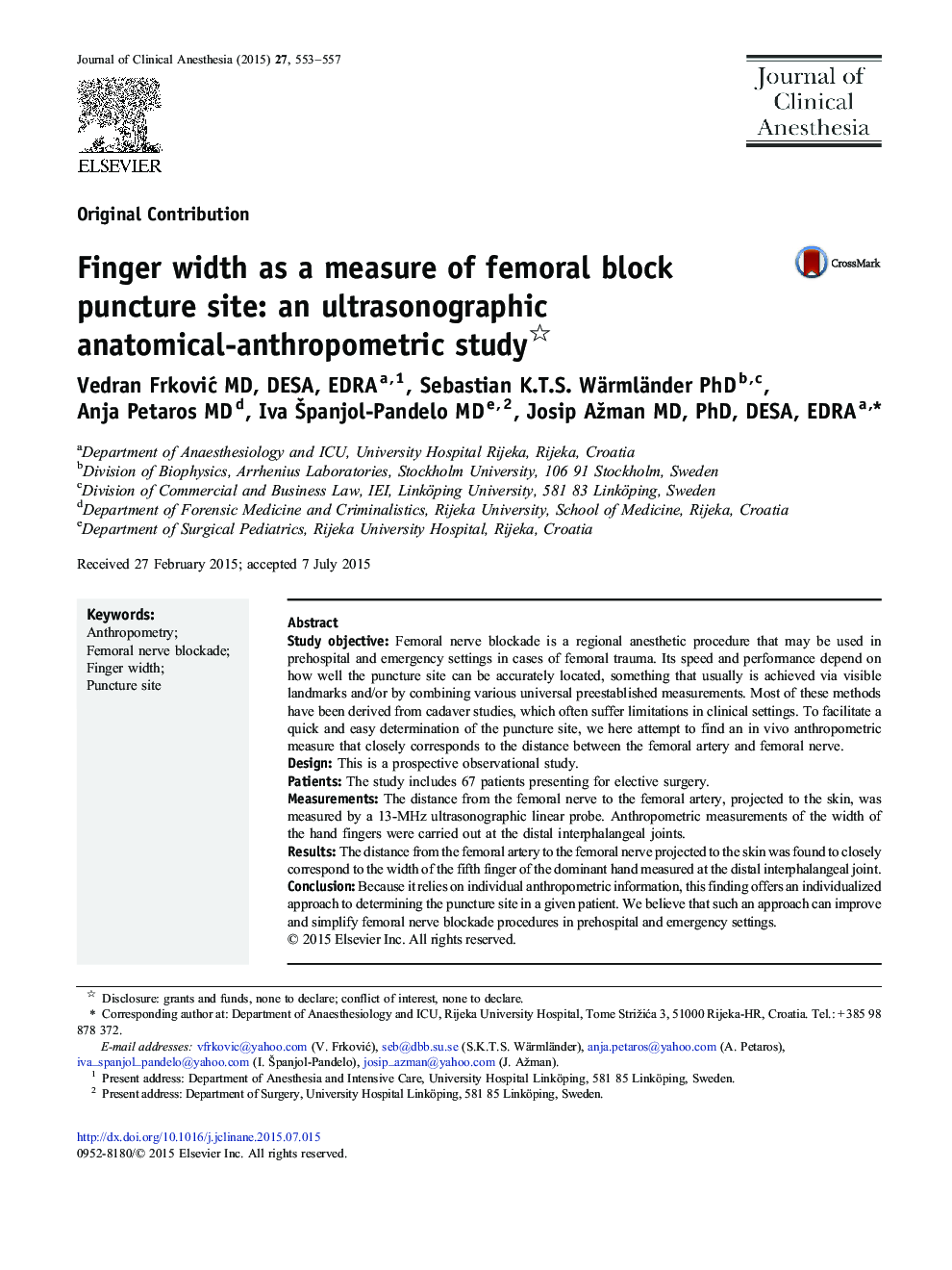| Article ID | Journal | Published Year | Pages | File Type |
|---|---|---|---|---|
| 2762492 | Journal of Clinical Anesthesia | 2015 | 5 Pages |
•The width of finger 5 accurately approximates the femoral artery-nerve distance.•Anthropometry affords an individual approach for femoral block performance.•Body mass index influences the correlation between the nerve-artery distance and finger width.•The proposed method is most useful for patients with intermediate body mass index values.
Study objectiveFemoral nerve blockade is a regional anesthetic procedure that may be used in prehospital and emergency settings in cases of femoral trauma. Its speed and performance depend on how well the puncture site can be accurately located, something that usually is achieved via visible landmarks and/or by combining various universal preestablished measurements. Most of these methods have been derived from cadaver studies, which often suffer limitations in clinical settings. To facilitate a quick and easy determination of the puncture site, we here attempt to find an in vivo anthropometric measure that closely corresponds to the distance between the femoral artery and femoral nerve.DesignThis is a prospective observational study.PatientsThe study includes 67 patients presenting for elective surgery.MeasurementsThe distance from the femoral nerve to the femoral artery, projected to the skin, was measured by a 13-MHz ultrasonographic linear probe. Anthropometric measurements of the width of the hand fingers were carried out at the distal interphalangeal joints.ResultsThe distance from the femoral artery to the femoral nerve projected to the skin was found to closely correspond to the width of the fifth finger of the dominant hand measured at the distal interphalangeal joint.ConclusionBecause it relies on individual anthropometric information, this finding offers an individualized approach to determining the puncture site in a given patient. We believe that such an approach can improve and simplify femoral nerve blockade procedures in prehospital and emergency settings.
